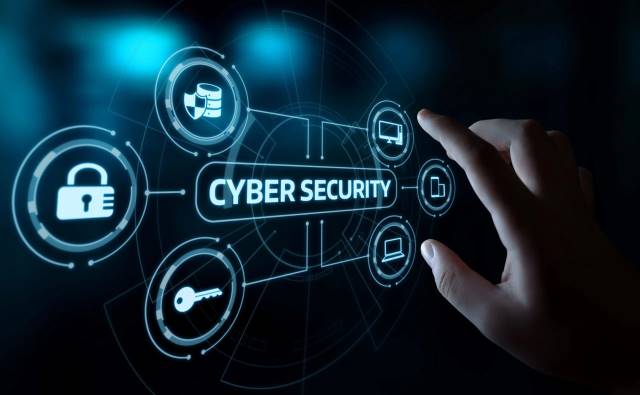Navigating the Digital Maze: Building a Robust Cybersecurity Strategy

In today’s interconnected world, cybersecurity has become a paramount concern for individuals, businesses, and organizations of all sizes. As we increasingly rely on digital technologies to store sensitive data, conduct transactions, and communicate, the potential for cyberattacks has grown exponentially. A robust cybersecurity strategy is no longer a luxury but a necessity for safeguarding our digital assets and protecting our privacy.
Understanding the Threat Landscape
The realm of cybersecurity is constantly evolving, with new threats emerging at an alarming pace. Cybercriminals are becoming increasingly sophisticated in their methods, exploiting vulnerabilities in software, hardware, and human behavior to gain unauthorized access to systems and data. Common cyberattacks include:
-
Phishing: Cybercriminals attempt to trick victims into revealing sensitive information, such as passwords or credit card numbers, by posing as legitimate entities.
-
Malware: Malicious software designed to harm or disrupt computer systems, often spread through email attachments, infected websites, or infected USB drives.
-
Ransomware: A type of malware that encrypts a victim’s files, demanding payment in exchange for the decryption key.
Experts’ Insights: Building a Comprehensive Strategy
To effectively combat these threats, organizations need to develop a comprehensive cybersecurity strategy that encompasses a range of measures:
1. Identify and Assess Risks: The first step is to identify and assess the organization’s assets, both physical and digital, to determine the potential risks and vulnerabilities. This involves understanding the nature of the data stored, the criticality of systems, and the potential impact of a breach.
2. Implement Protective Measures: Once risks have been identified, appropriate protective measures should be implemented. This includes firewalls to block unauthorized access, data encryption to safeguard sensitive information, and strong access controls to restrict user privileges.
3. Educate and Train Employees: Human error is a leading cause of cyberattacks. Regular training and awareness programs can help employees recognize and avoid common cybersecurity threats, such as phishing attempts and social engineering tactics.
4. Establish Incident Response Plans: Even with the best preventive measures in place, breaches can still occur. Having a well-defined incident response plan in place is crucial for minimizing damage and restoring normal operations quickly.
5. Continuously Monitor and Adapt: The cybersecurity landscape is constantly changing, so organizations must continuously monitor their systems and adapt their strategies accordingly. This includes keeping software and operating systems up to date, applying security patches promptly, and staying informed about emerging threats.
Experts’ Quotes: Emphasizing the Importance of Cybersecurity
“Cybersecurity is not just about protecting technology; it’s about protecting people.” – Michael Hayden, former Director of the CIA and NSA
“Cybersecurity is not a one-time event; it’s an ongoing process of risk management.” – Kevin Mandia, CEO of Mandiant
“Cybersecurity is not just about defense; it’s about resilience.” – Lisa Monaco, former Homeland Security Advisor
Proven Methods: Practical Strategies for Enhanced Cybersecurity
In addition to the general principles outlined above, here are some specific methods that have proven effective in enhancing cybersecurity:
-
Multi-factor authentication (MFA): Adding an extra layer of security to login processes by requiring additional verification, such as a code sent to a mobile device.
-
Data backups: Regularly backing up critical data ensures that it can be restored in the event of a ransomware attack or other data loss incident.
-
Vulnerability scanning and patching: Regularly scanning systems for vulnerabilities and applying patches promptly can address security flaws before they can be exploited.
-
Network segmentation: Divide networks into smaller, isolated segments to limit the spread of malware and other threats.
-
Penetration testing: Hiring ethical hackers to simulate cyberattacks can identify weaknesses in security measures.
Embracing a Culture of Cybersecurity
Cybersecurity is not just a technical challenge; it is a cultural one. Creating a culture of cybersecurity within an organization requires buy-in from all levels, from leadership to employees. By fostering awareness, promoting responsible digital behavior, and prioritizing cybersecurity in decision-making, organizations can significantly reduce their risk of cyberattacks and protect their valuable assets.
Remember, cybersecurity is not a destination but an ongoing journey. By adopting a proactive approach, implementing robust measures, and continuously adapting to the evolving threat landscape, organizations can navigate the ever-changing digital maze with confidence and resilience.
Additional Resources
For further information and resources on cybersecurity, please visit the following websites:
National Institute of Standards and Technology (NIST): https://www.nist.gov/
Cybersecurity and Infrastructure Security Agency (CISA): https://www.cisa.gov/
Open Web Application Security Project (OWASP): https://owasp.org/




